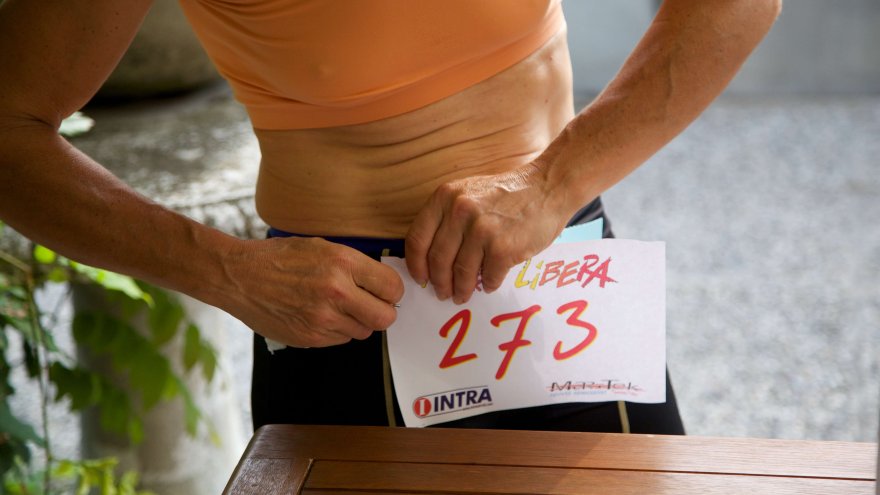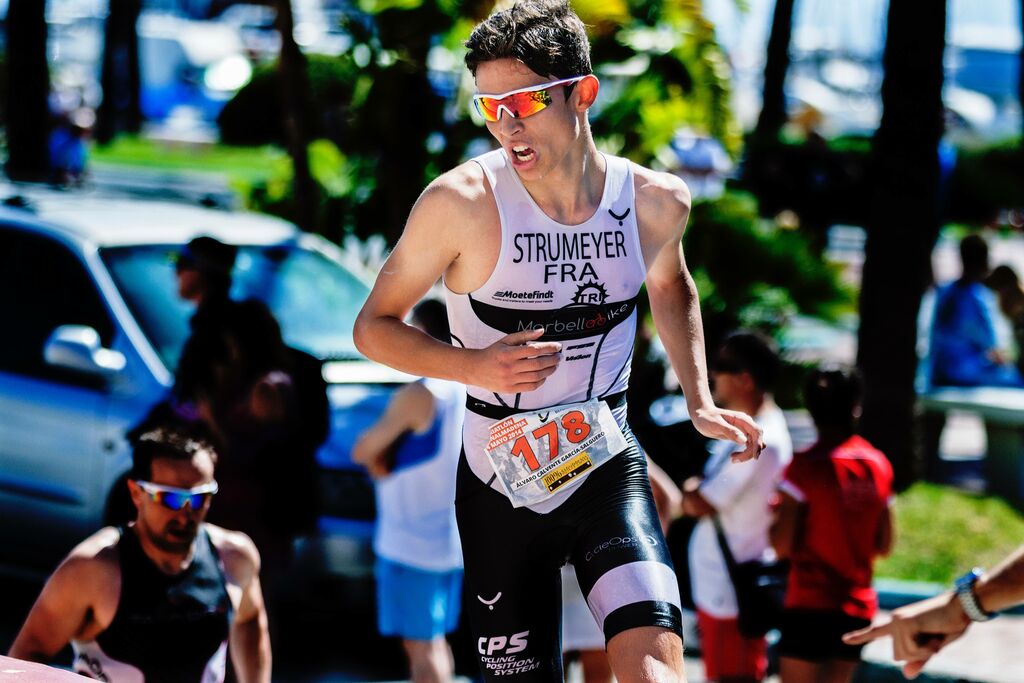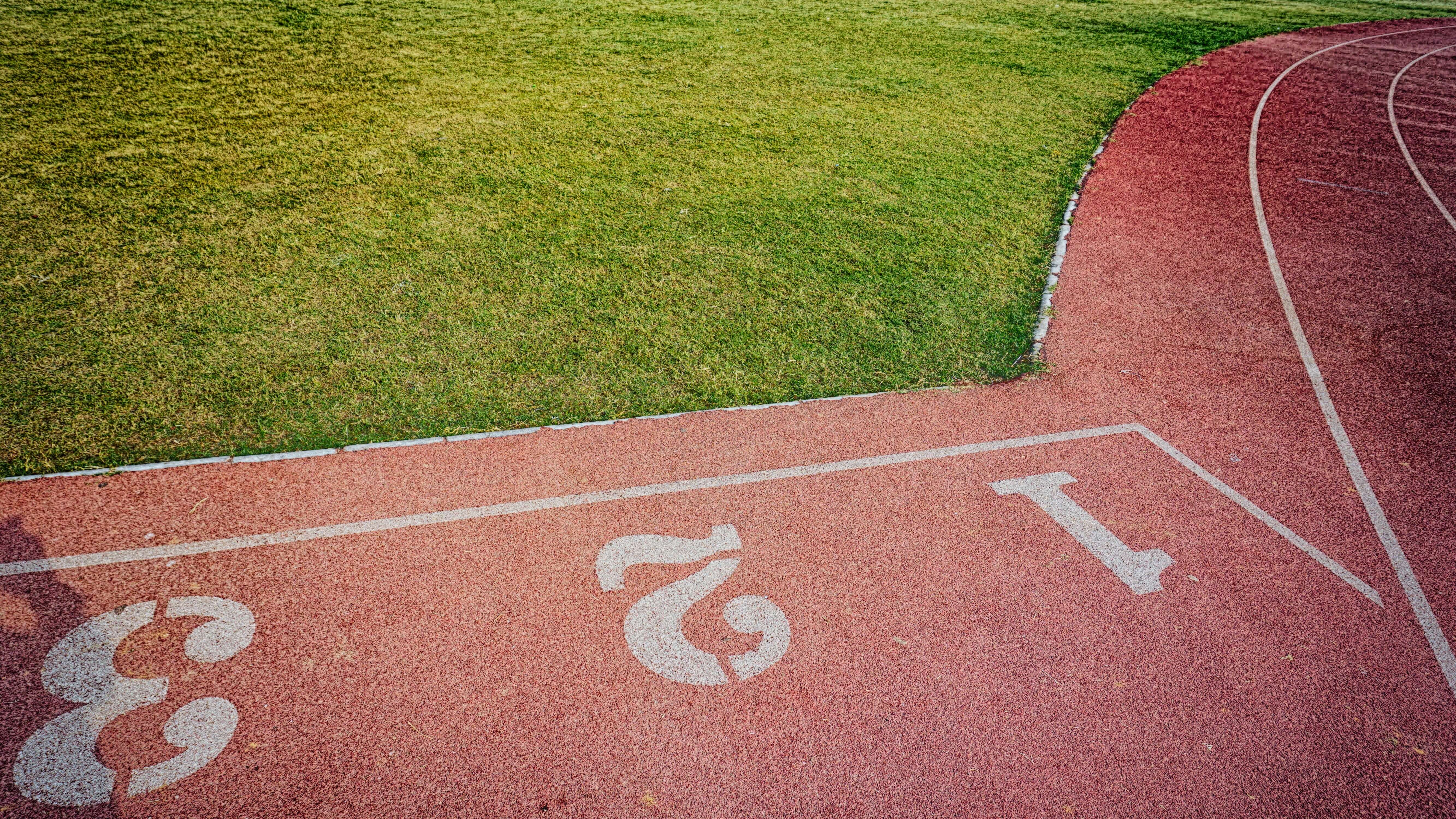Chip Time VS Gun Time: What’s the difference?

The morning of a race comes and runners pin their bibs on and gather behind the starting line. We shake the pre-race jitters and countdown the minutes until go time, trying to breathe slower than the speeding seconds. Then the gun goes off. The sea of runners speed ahead, some weaving around not to crash into those with a slower pace. And the dilemma starts: chip time VS gun time: which one to go by?
When it comes to landing a PR at a race every second count. And just as important it is to have a good start and find a steady momentum, finishing strong is also key. The finish line comes into view and the racer gives all the gas they have until crossing that line.
The runner gets a glimpse of the clock or remembers to turn off their Garmin after crossing to get an accurate finish time. But even if we do this, we can’t wait to see the official results to see our time and how we placed. And then we get that email that reveals the “official finish time” that is generally underneath our name, genre, and age. But things get confusing when another time is given: gun time.
Since these two times can be different by seconds or as large as minutes, runners are left scratching their heads as to what is the time they should go by. What is the difference between those two?

How Races Are Timed
Races are either timed or they aren’t. “Fun runs” are generally the type of races that aren’t timed. These are more relaxed and just about enjoying the event. This sometimes means stopping along the way to complete an obstacle or take a selfie.
Most 5ks, 10ks, and defiantly half marathons and marathons are timed events. The race website often reveals if it is timed. This includes whether or not it is chip timed and a USA Track & Field (USATF) certified course. However, races can also be gun timed. To make things even more confusing is the fact that most are both gun and chip timed.
Chip Timing
The most common way to get chip timing is using an RFID chip. The chip is provided by the race organizers and it is either attached as a shoelace tag or comes inside the participants’ race bib. It works by sending out an electromagnetic wave when crossing over these RFID mats that are placed at the start, finish and sometimes during checkpoints in longer distance races. It’s important not to bend the race bib or folding up prior to the event to not damage the chip.
Gun Timing
Gun time doesn’t necessarily mean an actual gun goes off. While this might be the case for some track and field events, most races don’t have an actual gun. However, the race organizer or MC/DJ count the runners down and send them off. (Think “on your mark, get set, GO!”)

According to gun time, the first person to cross that finish line is the winner, the second person is 2nd place, and so on and so forth until the last runner. The time it takes to cross the finish line after the start time (i.e. the gun goes off, the MC says “go”, etc.) is the runner’s gun time.
Chip time VS Gun time: Which One To Go By?
So why include both? And which way is more accurate?
There are many benefits to chip timing. First and foremost, it is the most accurate way to track the runner based on the signals from running over the mats. This also means that runners don’t need to fight to make their way to the front of the starting line. This is huge for bigger races that attract hundreds and even thousands of runners. Some prefer to even hang back and start at the back of the pack at chipped races so they aren’t slowed down when tight roads mean there isn’t enough room for everyone to pass. The RFID chip can also be used to reveal splits during the race for competitive runners based on what time they cross certain mats.
Chip time is more about the speed of the runner. So even if someone finished after a runner, they could be listed in results before them or place in awards based on their faster chip time.

Interestingly enough, gun time is actually the official race time used. Gun time is the time used by the USATF. It also keeps the integrity of the competition, saluting to the traditional ways the events are measured. This is why race stats include both metrics.
Bottom Line
So go by chip time when looking to PR, or when looking at training stats to see how fast and how far the runner has come. It is also used to determine if the runner placed in the age group or overall because of timing accuracy. Gun time is the go-to for those looking to place in the top 3 during an event, looking for the best time to place overall. Once you’ve learned about the difference of chip time VS gun time, remember that the difference in time for smaller races is so small, even though each added second counts.
Sources
- , Chip Time vs. Gun Time, Running website
- , Chip Time vs. Gun Time: What Is It? And Why the Controversy?, Running Website
- , Chip Timing vs. Gun Timing: What’s the difference?, Running and Track Website
Latest Articles
 Is Running on a Treadmill Easier Than Running Outside?Runners have their own preferences, whether it is treadmill running, running outside on the road, or exploring trails. So...
Is Running on a Treadmill Easier Than Running Outside?Runners have their own preferences, whether it is treadmill running, running outside on the road, or exploring trails. So... Is It OK to Use Trail Running Shoes on the Road?While trail running shoes can be used on roads, especially in situations where a runner encounters mixed terrains or pref...
Is It OK to Use Trail Running Shoes on the Road?While trail running shoes can be used on roads, especially in situations where a runner encounters mixed terrains or pref... How to Fix Sore Quads After Running?Rest, ice, gentle stretching, and over-the-counter pain relievers can help soothe sore quads after running. Also, ensure ...
How to Fix Sore Quads After Running?Rest, ice, gentle stretching, and over-the-counter pain relievers can help soothe sore quads after running. Also, ensure ... 10 Fruits With The Most Electrolytes to Replace Sports DrinksThese fruits are high in electrolytes such as potassium, magnesium, and calcium, essential for hydration, muscle function...
10 Fruits With The Most Electrolytes to Replace Sports DrinksThese fruits are high in electrolytes such as potassium, magnesium, and calcium, essential for hydration, muscle function...

